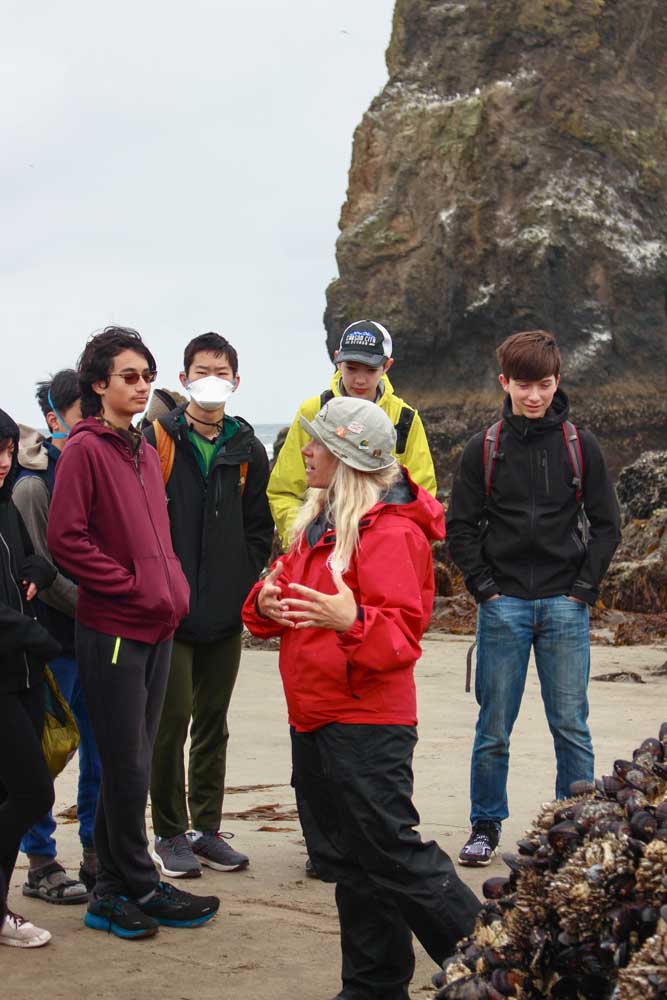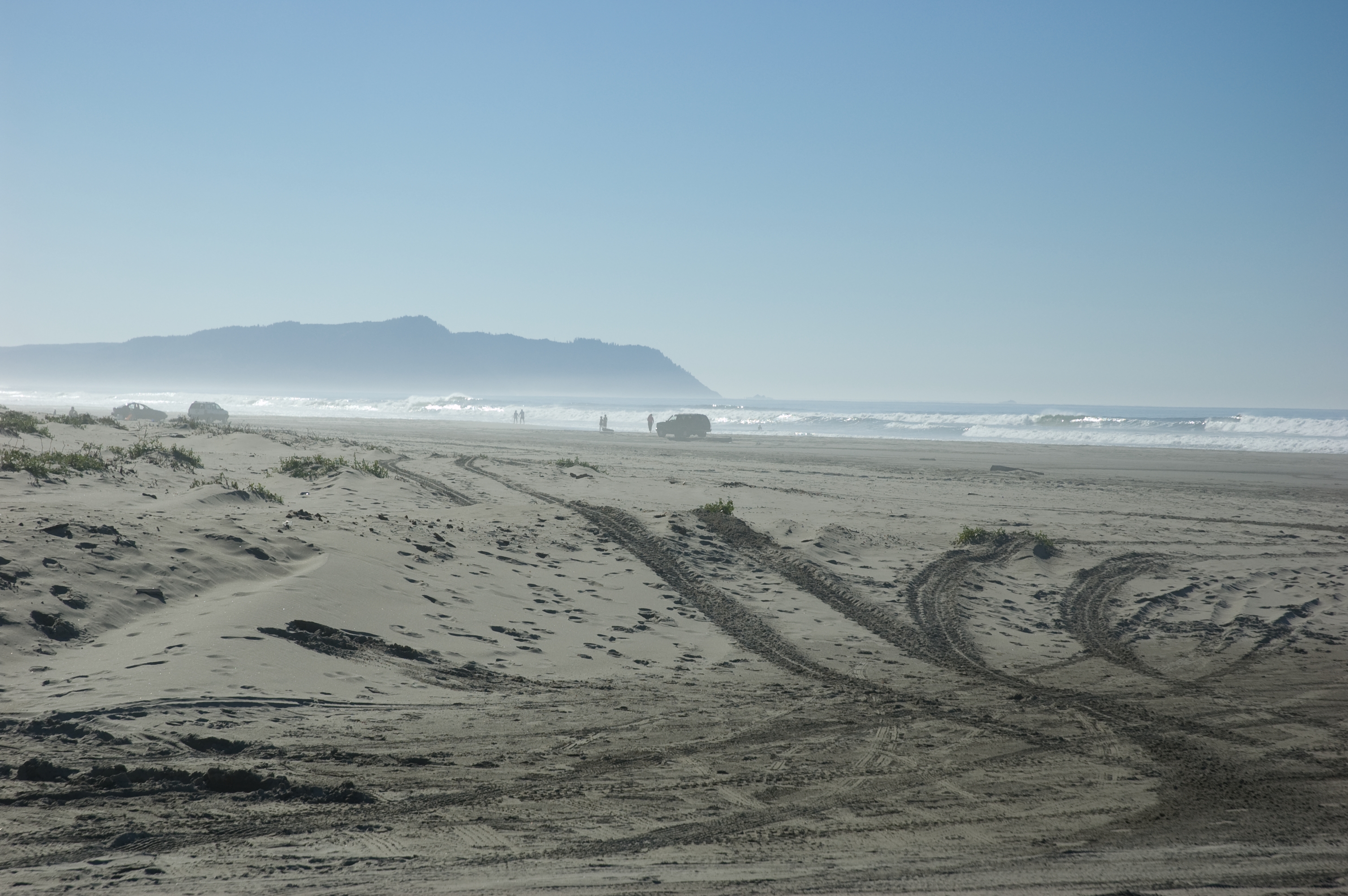After slight puffin increase, a new season begins at Haystack Rock
Published 9:00 am Tuesday, February 13, 2024

- A rocky shore interpreter with the Haystack Rock Awareness Program talks to a group of visitors. Interpreters will be out beginning Friday during daytime low tides through November.
Rocky shore interpreters with the Haystack Rock Awareness Program will return to the base of the 235-foot sea stack in Cannon Beach this week as a new season of interpretive programming kicks off.
As winter turns to spring, they’ll keep a close watch on the rock’s tufted puffin colony as it returns to nest.
While the first puffin sighting on Haystack Rock is still months away, one recent survey by the U.S. Fish and Wildlife Service could indicate a slight increase from previous years. The colony was counted at 106 birds last year, up from a historic low of 74 in 2022.
But there’s plenty to see at Haystack Rock even in the winter, and beginning Friday morning, seasonal volunteers will begin to fan out across the beach during daytime low tides to answer visitors’ questions, point out sites and sights and ensure safe exploration of the fragile tide pools surrounding the rock.
The Haystack Rock Awareness Program was established in 1983 by Neal and Karen Maine, avid birders and tide poolers who saw in the field the need and demand for a formal education about the Cannon Beach landmark.
The idea was adopted as an environmental education program by the city of Cannon Beach in hopes of increasing awareness of the area, which is both a marine garden and part of the Oregon Islands National Wildlife Refuge.
“Haystack Rock has some of the best tide pools on the Oregon Coast,” said Mylasia Miklas, a communications coordinator with the program.
Miklas estimates that the program has educated over a million visitors and tens of thousands of students.
A city employee, Miklas started as a rocky shore interpreter, pointing out ochre sea stars, nudibranchs, anemones and other creatures that live in the intertidal zone.
“I love being able to connect with people, especially those that have never been to the ocean before, and be able to have that human, one-on-one experience with them down on the beach,” Miklas said.
In April, Miklas and other volunteers will welcome the tufted puffins with an annual event. One of four puffin species, the birds remain on the rock through late summer.
“The best time to visit is late May to early June, because they haven’t really laid their eggs yet but they’re still pretty active,” Miklas said. She added that morning light is best for spotting them.
For those hoping to, last year’s survey may indicate some hope, though tufted puffins along the Oregon Coast remain in steady decline. In the late 1980s, a survey documented thousands along the state’s coastline, but by 2021, the state’s population was just 553.
Angela Benton, board chair for the Friends of Haystack Rock, a stewardship organization that works with the Haystack Rock Awareness Program, is researching the decline and possible solutions.
Benton said the group partners with several organizations along the coast and throughout the state on puffin education and conservation activities.
The organization’s main event of the season, the Great Puffin Watch, takes place over the Fourth of July weekend, with volunteers at the beach offering binoculars and information about the beloved birds.
Nature talks are also planned through April. Additional puffin-related events throughout the season include arts and crafts, virtual talks and games for kids.
In the meantime, check the tides and head to the tide pools at the base of Haystack Rock, and look for volunteers in red jackets who will answer questions about the fascinating discoveries there are to find.
Explore the tide pools
Find Haystack Rock Awareness Program interpreters on the shores of Cannon Beach during daytime low tides, starting from 9:30 a.m. to 2:45 p.m. Friday
For an updated schedule with daytime low tides, visit www.haystackrockawareness.com/schedule









